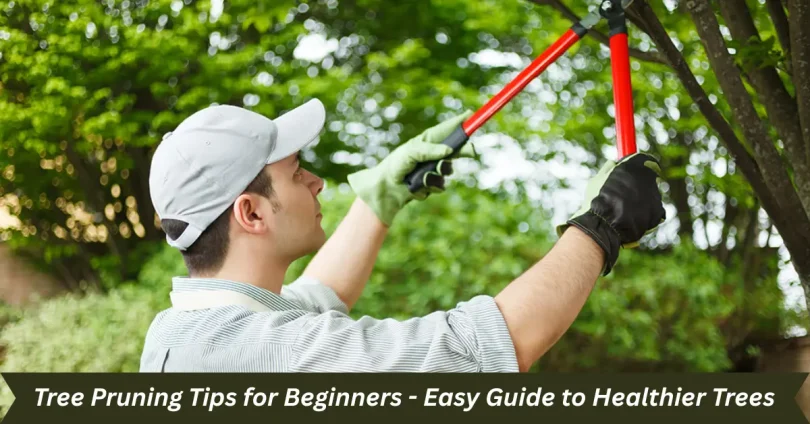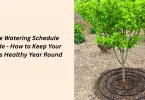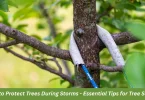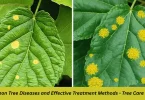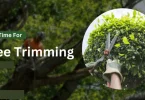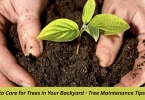Introduction
If you’re new to gardening or just looking to improve the look and health of your trees, you’re in the right place! This blog, “Tree Pruning Tips for Beginners – Easy Guide to Healthier Trees,” is designed to help you understand the basics of tree pruning in a simple way. Pruning may seem tricky at first, but with a few tips and the right tools, anyone can do it. In this guide, you’ll learn why pruning matters, when to do it, and how to prune safely and effectively—even if you’ve never held pruning shears before!
What is “Tree Pruning Tips for Beginners”?
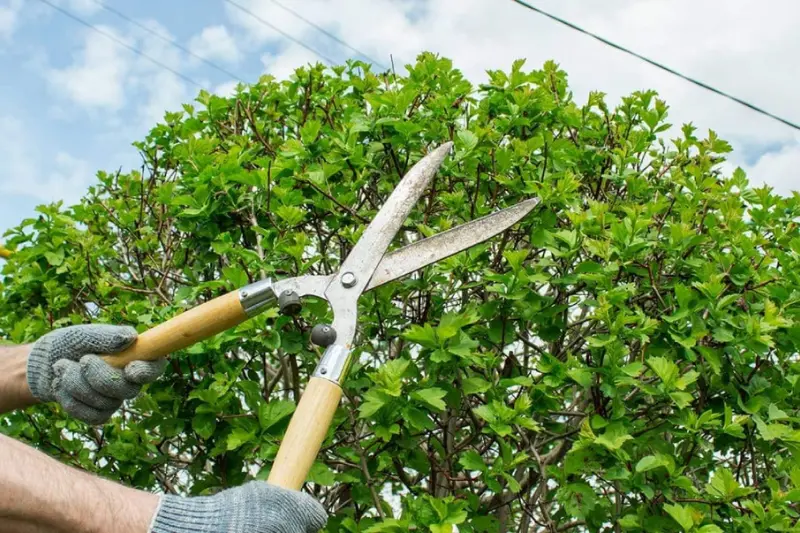
Tree pruning tips for beginners are simple, easy-to-follow guidelines designed to help people who are new to gardening or tree care learn how to safely and effectively trim their trees. These tips focus on the basics—like when to prune, which branches to cut, what tools to use, and how to avoid common mistakes. The goal is to keep trees healthy, strong, and looking great, even if you’ve never done any pruning before.
Whether you’re dealing with a fruit tree, shade tree, or ornamental tree, these beginner tips make the process less confusing and more manageable.
Why Tree Pruning Is Important
Improves Tree Health
- Removes Dead or Diseased Branches: Cutting away unhealthy limbs prevents the spread of disease and decay to the rest of the tree.
- Encourages New Growth: Pruning stimulates fresh, healthy growth by redirecting energy to strong branches.
- Prevents Pest Infestations: Dead wood attracts insects and pests—removing it protects your tree and surrounding plants.
Enhances Tree Appearance
- Shapes the Tree Naturally: Pruning helps maintain the tree’s natural shape and beauty, making your yard look neat.
- Removes Overgrown Limbs: Cutting excess branches keeps trees balanced and prevents them from looking messy.
- Boosts Curb Appeal: Well-pruned trees make your garden or backyard more attractive and well-maintained.
Increases Safety
- Prevents Falling Branches: Weak or dead branches can fall and cause injury or damage—pruning keeps your yard safer.
- Keeps Branches Clear of Structures: Trimming away limbs near roofs or power lines helps avoid accidents and costly repairs.
- Improves Visibility: Pruned trees won’t block views, walkways, or driveways, making outdoor areas easier to use.
Encourages Better Fruit and Flower Production
- Promotes Healthier Blossoms: Pruning helps flowering trees produce bigger and more vibrant blooms in the growing season.
- Improves Fruit Quality: By thinning overcrowded branches, the tree can focus on growing larger, tastier fruits.
- Supports Stronger Branches: A well-pruned tree grows stronger limbs that can better support heavy fruit loads.
Supports Long-Term Tree Growth
- Establishes Strong Structure Early: Pruning young trees helps form a solid shape and strong central trunk from the beginning.
- Reduces Future Problems: Early trimming prevents weak forks or poorly angled branches that can split later.
- Extends Tree Lifespan: Consistent, proper pruning helps trees live longer and remain healthier over the years.
Improves Sunlight and Airflow
- Lets More Sunlight In: Thinning dense branches allows more light to reach leaves, helping the tree grow stronger.
- Boosts Air Circulation: Better airflow through the canopy reduces moisture buildup, preventing fungal diseases.
- Helps Nearby Plants Thrive: With less shade and more airflow, plants under or near the tree get what they need too.
Step-by-Step Guide: Tree Pruning Tips for Beginners
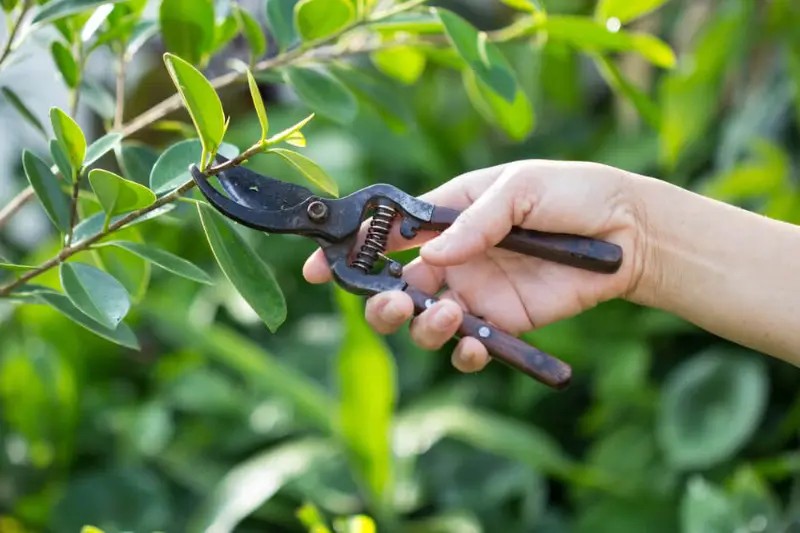
Step 1: Understand Why You’re Pruning
- Decide the reason—health, shape, safety, or growth.
- Having a clear goal helps you prune the right way and avoid cutting too much.
Step 2: Choose the Right Time
- Late winter or early spring is the best time to prune most trees.
- Avoid pruning in fall—it slows healing and may lead to disease.
Step 3: Gather the Right Tools
- Use hand pruners for small branches, loppers for thicker ones, and a pruning saw for large limbs.
- Always wear gloves and safety goggles, and clean your tools before use.
Step 4: Identify What Needs to Be Pruned
- Look for dead, damaged, or diseased branches first.
- Also remove crossing branches, suckers, and water sprouts that take energy from the tree.
Step 5: Start with the 3-Cut Method (for large branches)
- First Cut: Make a small notch underneath the branch, a few inches from the trunk.
- Second Cut: Cut through the branch a bit further out, to prevent bark tearing.
- Final Cut: Remove the stub cleanly just outside the branch collar (the raised area at the base).
Step 6: Shape the Tree Gently
- Trim lightly to maintain the tree’s natural shape—don’t overdo it.
- Avoid cutting more than 20–25% of the tree’s canopy in one season.
Step 7: Clean Up and Check Your Work
- Collect and dispose of all pruned branches and debris.
- Double-check your cuts—make sure they’re clean, not jagged, and placed correctly.
Step 8: Monitor Tree Health After Pruning
- Watch how the tree responds over the next few weeks.
- Look for signs of healing and new growth; avoid fertilizing immediately after pruning.
Advantages and Disadvantages of Tree Pruning
| Advantages of Tree Pruning | Disadvantages of Tree Pruning |
| Promotes Tree Health Pruning removes dead, diseased, or weak branches, which helps the tree stay healthy and strong. | Risk of Over-Pruning Cutting too much can stress the tree, reduce its energy reserves, and lead to poor growth or even death. |
| Enhances Growth and Appearance It encourages better shape and structure, making trees look more attractive and grow more evenly. | Requires Knowledge and Skill Improper pruning—like cutting in the wrong place or at the wrong time—can harm the tree. |
| Improves Safety By removing potentially hazardous branches, pruning helps prevent property damage and personal injury. | Tools and Safety Concerns Working with sharp tools or on tall trees can be risky without proper equipment or experience. |
| Increases Fruit and Flower Production Regular pruning can lead to more flowers and better-quality fruits, especially in fruit-bearing trees. | Can Be Time-Consuming Especially for larger trees, pruning may take significant time and effort if done manually. |
| Boosts Airflow and Sunlight Thinning the canopy lets more sunlight and fresh air reach inner branches and nearby plants. | Not Always a DIY Job Some pruning tasks, especially near power lines or on tall trees, may require professional help. |
FAQs – Tree Pruning Tips for Beginners
What is tree pruning?
Tree pruning means cutting off dead, damaged, or unwanted branches to help the tree grow better and stay healthy.
When is the best time to prune trees?
Late winter or early spring is usually the best time to prune most trees, just before new growth starts.
How often should I prune my trees?
Most trees need pruning once a year, but some may need it more or less depending on their type and growth.
Do I need special tools for pruning?
Yes, basic pruning tools like hand pruners, loppers, and a pruning saw are helpful for beginners.
Can pruning hurt my tree?
Yes, if done incorrectly. Over-pruning or cutting in the wrong place can damage the tree or slow its growth.
What branches should I cut first?
Start by removing dead, diseased, or crossing branches. Then shape the tree for better airflow and balance.
Can I prune fruit trees the same way?
Fruit trees need special care. Prune them to allow sunlight in and improve fruit production, but don’t overdo it.
Conclusion
Pruning trees may seem tricky at first, but with the right tips and tools, anyone can do it. It helps your trees grow healthier, look better, and stay safe. Start small, be gentle, and always prune with care. With a little practice, you’ll be pruning like a pro in no time!
Bonus Tips for Beginner Tree Pruners
- Prune During the Right Season: Late winter or early spring is usually best—trees are dormant and wounds heal faster.
- Clean Your Tools Regularly: Dirty tools can spread diseases between trees. Always clean and disinfect before and after use.
- Don’t Overdo It: Never remove more than 25% of a tree’s branches in a single season. Too much pruning can weaken the tree.
- Use Sharp, Quality Tools: Dull blades can cause rough cuts and damage the tree. Invest in a good pair of pruning shears or loppers.
- Know the 3-Cut Method for Large Branches: Prevent bark tearing by using a three-step cutting method: undercut, top cut, then final cut near the trunk.
- Watch for Signs of Tree Stress: After pruning, check your tree for wilting, discoloration, or slow growth—it might be a sign you cut too much.
- Avoid Pruning in Wet Conditions: Wet weather can spread fungi and bacteria. Dry days are safer for both you and your tree.

